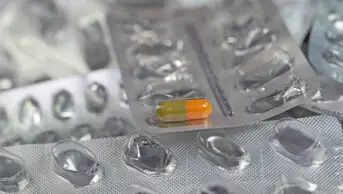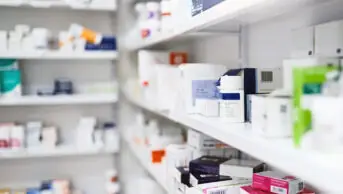
Alamy Stock Photo / JL
Valsartan is a frequently prescribed blood pressure medicine, with around 400,000 items dispensed in England each year[1]
. However, in June 2018, investigations by European and US regulators identified traces of potential carcinogens in batches of the drug that originated from a manufacturing plant in China.
The discovery of organic lubricant N-nitrosodimethylamine in batches of valsartan medicines prompted a giant global recall from multiple manufacturers.
Immediately following a review by the European Medicines Agency (EMA), 24 countries across Europe, the Middle East and North America recalled approximately 2,300 batches of valsartan products. Then, in September 2018, concerns were raised about contamination from a second nitrosamine (N-nitrosodiethylamine) also found in valsartan products[2]
.
Further testing and the implication of other factories having similar problems led to a further recall in December 2018 and media reports suggest contamination may be an ongoing issue for valsartan.
In January 2019, the US Food and Drug Administration (FDA) said its investigation had shown that although the overall risk to patients was small, it was “deeply concerned” that the contamination went undetected for so long. It said it had uncovered “systemic problems of supervision” during manufacture that could have created the conditions for quality issues to occur.
Unfortunately, this is not a ‘one off’ cautionary tale — it is the latest in a series of concerns about manufacturers among China and India, two of the world’s largest producers of pharmaceuticals.
Ongoing concerns
India is the global leader in generic drug production and manufactures 25% of all medicines in the UK[3]
. A parliamentary report on the impact of Brexit on the pharmaceutical sector, published in May 2018, highlighted that 80–90% of generic medicines used in the NHS are imported, with China and India in the top five providers of UK medicines outside of the EU[4]
.
And this is reflected in the concerns raised by regulators. From the start of 2018 until August 2019, the FDA’s Office of Manufacturing Quality sent 75 warning letters to pharmaceutical manufacturers across the globe that appeared to have violated its safety and/or quality standards. Half (49%) of these warning letters were sent to companies based in China or India[5]
.
A search of EMA non-compliance notices shows 22 results from January 2018 until August 2019, 64% of which were for companies based in India or China. This includes an inspection of Qilu Pharmaceutical Company — based in Shandong Province, China — where, in September 2018, inspectors found 30 deficiencies in the production of active pharmaceutical ingredients (APIs) for the broad-spectrum antibiotic piperacillin-tazobactam. As a result, special measures were put in place to oversee the production of the drug because a closure may have caused critical medicines shortages[6]
.
We need to make sure there are regular inspections in India and China, to the same standard that manufacturers in the UK would get
Gino Martini, chief scientist at the Royal Pharmaceutical Society, says: “There does seem to have been a spate of inspectors going in [to Chinese and Indian pharmaceutical manufacturers] and finding problems, and that is a good thing because it shows the system is working.
“But we do need to make sure there are regular inspections to the same standard that manufacturers in the UK would get.”
Warwick Smith, director general of the British Generic Manufacturers Association, explains that the production of both finished product pharmaceuticals and APIs has been concentrated in India and China for several reasons, including looser patent rules and a desire to drive down costs.
“That is what should keep people awake at night,” he says. “If you only have one or two manufacturers for APIs for a critical product, that is a real weakness in the supply chain.”
According to a report published in May 2018 by the Access to Medicines Foundation, an independent non-profit organisation that analyses how the world’s largest pharmaceutical companies are addressing access to medicine, the concentration of API manufacturing in India and China is a main part of the problem[7]
.
Quality data on the concentration of API manufacturers is almost impossible to source, but there are figures available that provide some perspective. It is estimated that 40% of APIs for medicines sold in the United States comes from China[8]
. The scale of the production in China and India is also indicated by the FDA warning notices — of 18 warning letters issued to API manufacturers since the beginning of 2018, 9 letters have been issued to Chinese companies and 5 letters have been sent to companies in India.
Anecdotally, Smith estimates that 50–60% of finished product medicines dispensed in the UK are made within the EU, but adds that he would like to see a wider range of API manufacturers in a wider variety of countries. Martini agrees that steps should be taken to protect UK supply, especially for essential medicines, saying: “It would be good to have a manufacturing base [for critical drugs] in the UK.” Martini also points out that France and Germany have been in discussions about repatriating the production of antibiotics.
Improving the situation
Regulators have been working to address concerns, with Europe, Australia, the United States and the World Health Organization joining forces to ramp up inspections of API production in other parts of the world. A report published by the EMA in April 2018 showed that 1,333 inspections were carried out at 458 manufacturing sites of ‘common interest’ in 18 different countries between 2011 and 2016. Some 49% of the inspections were carried out in India and a further 36% of inspections were carried out in China[9]
.
However, there is little evidence yet to suggest that standards are lower in India and China. In early 2019, the FDA published average site inspection scores from the past decade, which showed that factories in Europe and the United States had the highest rating, at 7.9 and 7.7 out of 10.0, respectively, compared with 7.0 each for both India and China. “These scores indicate an acceptable level of compliance to current good manufacturing practices on average. Still, some trends highlight opportunities for increased outreach to, surveillance of and enforcement of certain markets,” the report stated[10]
.
A spokesperson for the MHRA said its inspections are scheduled according to a risk-based model, regardless of the location of the manufacturer. “There is not a significant difference in the number of serious non-compliance issues identified at UK sites when compared to those of non-EU countries,” they said.
Atholl Johnston, professor in clinical pharmacology at Queen Mary University of London, says that reports of compliance notices being issued in India or China are almost an everyday occurrence.
“Valsartan was a real eye-opener because in the past year we found out that one company makes the majority of the API for that drug. When you find a contaminant, you end up taking eight different formulations off the market.”
He points out that because companies regard API information as commercially sensitive, the fragility of the supply chain only becomes apparent when something untoward happens. Johnston says he wants to see an approved list of medicines suppliers who have not just passed the most recent inspection, but have demonstrated good standards for a certain length of time.
“There are some companies who have been caught out time after time and I don’t understand how they are allowed to keep importing,” he adds.
Box: No-deal Brexit and medicines regulation
The European Medicines Agency (EMA) is currently responsible for the evaluation and safety monitoring of medicines, alongside ‘competent authorities’ based in each member state. The Medicines and Healthcare products Regulatory Agency (MHRA) is the competent authority in the UK. If the UK were to leave the EU without a deal in place, the MHRA would need to take on all the functions of the EMA.
A report published in July 2019 by the UK government’s Exiting the European Union Committee says that in the event of a no-deal Brexit, the UK will be treated as a ‘third country’ and will be “shut out” of EU data exchanges on pharmacovigilance, falsified medicines and clinical trials. The committee said this would carry “unacceptable” risks to patient safety.
Liz Breen, reader in health services operations at the University of Bradford School of Pharmacy and Medical Sciences, explains that the fact that medicines are a global market means that one player will find it hard to make its voice heard. “There is very little reason for the Indian market to be loyal to any one customer base,” she says. “They export low-cost products globally and hence these products will always be in demand.”
From the NHS’s point of view, Breen advises that having a range of tendering options is vital. “Multi-sourcing is much lower risk, delivers more responsiveness and agility in the supply chain and, in turn, reduces vulnerability and ensures continuity of supply for patients,” she says.
References
[1] Open Prescribing. GP Prescribing Data. Items for valsartan vs renin-angiotensin system drugs by all CCGs. 2015. Available at: https://openprescribing.net/analyse/#org=CCG&numIds=0205052V0&denomIds=2.5.5&selectedTab=chart (accessed August 2019)
[2] Farrukh MJ, Tariq MH, Malik O & Tahir Mehmood Khan TM. Valsartan recall: global regulatory overview and future challenges. Ther Adv Drug Saf 2019. doi: 10.1177/2042098618823458
[3] India Brand Equity Foundation. Indian Pharmaceutical Industry. 2019. Available at: https://www.ibef.org/industry/pharmaceutical-india.aspx (accessed August 2019)
[4] House of Commons Business, Energy and Industrial Strategy Committee. The impact of Brexit on the pharmaceutical sector. 2018. Available at: https://publications.parliament.uk/pa/cm201719/cmselect/cmbeis/382/382.pdf (accessed August 2019)
[5] US Food and Drug Administration, Office of Manufacturing Quality. Warning letters 2019. 2019. Available at: https://www.fda.gov/drugs/warning-letters-and-notice-violation-letters-pharmaceutical-companies/warning-letters-2019#OMQ (accessed August 2019)
[6] EudraGMDP database. 2013. Available at: http://eudragmdp.ema.europa.eu/inspections/displayHome.do (accessed August 2019)
[7] Cogan D, Karrar K & Iyer JK. Access to Medicine Foundation. Shortages, stockouts and scarcity: the issues facing the security of antibiotic supply and the role for pharmaceutical companies. 2018. Available at: https://accesstomedicinefoundation.org/media/atmf/Antibiotic-Shortages-Stockouts-and-Scarcity_Access-to-Medicine-Foundation_31-May-2018.pdf (accessed August 2019)
[8] Financial Times. China drug scandals highlight risks to global supply chain. 2018. Available at: https://www.ft.com/content/38991820-8fc7-11e8-b639-7680cedcc421 (accessed August 2019)
[9] European Medicines Agency. Increasing oversight of API manufacturing through international collaboration. 2018. Available at: https://www.ema.europa.eu/en/news/increasing-oversight-api-manufacturing-through-international-collaboration (accessed August 2019)
[10] US Food and Drug Administration Center for Drug Evaluation and Research. Office of Pharmaceutical Quality. Report on the state of pharmaceutical quality. 2019. Available at: https://www.fda.gov/media/125001/download (accessed August 2019)


